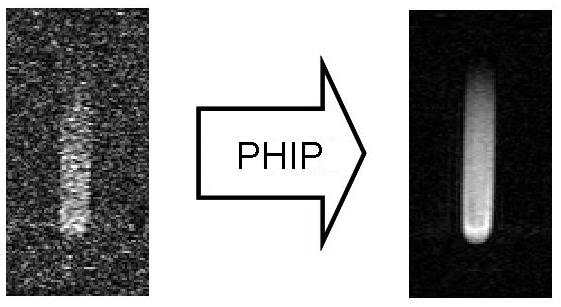Parahydrogen-induced Hyperpolarization
Parahydrogen-induced Nuclear hyperpolarization using ALTADENA- and PASADENA-conditions
Para-hydrogen-induced nuclear spin polarization under ALTADENA and PASADENA conditions is based on the hydrogenation of unsaturated organic molecules using para-hydrogen (para-H2). Para hydrogen only has the singlet state of molecular hydrogen and is enriched at very low temperatures in the presence of a catalyst (e.g. activated carbon). By hydrogenation, the para-H2, which cannot be detected by means of MR, is transferred to an AX system in which only states of corresponding symmetry are occupied. The high spin order of the enriched para-H2 is converted into a (non-thermal) population difference in the Zeeman levels of the two protons, which results in increased MR signals.
The polarization can also on other MR-active nuclei in the spin system, such as fluorine. When the signal increases, lower concentrations can be detected or faster measurements can be carried out. The signal gains achieved, however, are heavily dependent on the selection of the catalyst system and the solvent.
The fields of application include the development of highly specific contrast media, the investigation of reaction mechanisms and the elucidation of molecular interactions. In the field of MR imaging, hyperpolarized nuclei, such as 19F, which have hardly any biological occurrence, can be used to enhance contrast. They stand out strongly from the background or can also be overlaid with 1H-based anatomical data. For example, the detection of hyperpolarized 3-fluorostyrene at a concentration of 5 mmol l-1 was achieved in 466 ms.








